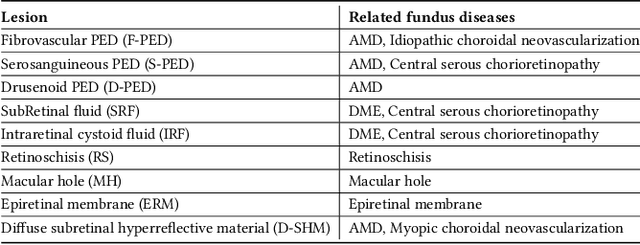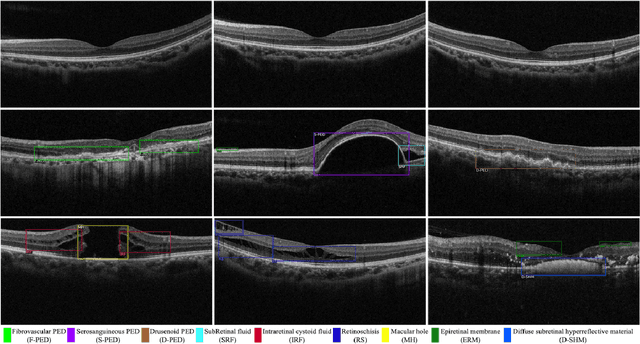Lesion Localization in OCT by Semi-Supervised Object Detection
Paper and Code
Apr 24, 2022



Over 300 million people worldwide are affected by various retinal diseases. By noninvasive Optical Coherence Tomography (OCT) scans, a number of abnormal structural changes in the retina, namely retinal lesions, can be identified. Automated lesion localization in OCT is thus important for detecting retinal diseases at their early stage. To conquer the lack of manual annotation for deep supervised learning, this paper presents a first study on utilizing semi-supervised object detection (SSOD) for lesion localization in OCT images. To that end, we develop a taxonomy to provide a unified and structured viewpoint of the current SSOD methods, and consequently identify key modules in these methods. To evaluate the influence of these modules in the new task, we build OCT-SS, a new dataset consisting of over 1k expert-labeled OCT B-scan images and over 13k unlabeled B-scans. Extensive experiments on OCT-SS identify Unbiased Teacher (UnT) as the best current SSOD method for lesion localization. Moreover, we improve over this strong baseline, with mAP increased from 49.34 to 50.86.
 Add to Chrome
Add to Chrome Add to Firefox
Add to Firefox Add to Edge
Add to Edge